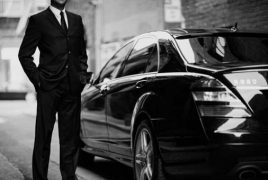Uber resumes self-driving car tests after Arizona crash March 28, 2017 - 14:42 AMT PanARMENIAN.Net - Uber’s fleet of self-driving cars restarted testing, after a high-speed crash on Friday, March 24 evening in Tempe, Arizona flipped one of the company’s modified Volvo SUVs onto its side. The Uber was in self-driving mode at the time of the crash, with two engineers riding up front. Police say the other (human) driver caused the crash, and was issued a citation for failure to yield while making a left turn, Wired said. The cars were traveling in opposite directions on McClintock Drive, a busy, undivided two-lane road. At the intersection of Don Carlos Drive, the other car, a silver Ford Edge, turned left, striking the Uber Volvo, which had the right of way. That’s all the Tempe police have revealed—had this crash happened in California, which has stricter rules governing autonomy, Uber would have been required to file a public accident report. After the crash, Uber grounded its fleets, which are also running in Pittsburgh and San Francisco. On Monday, it resumed testing in San Francisco, and spokesperson Chelsea Kohler said the company planned to get back on the road in Tempe and Pittsburgh by the end of the day. The Tempe takedown points to the promise of putting computers behind the wheel: Risk-averse and incapable of getting tired, drunk, distracted, or angry, they should avoid the vast majority of mistakes human drivers make all the time, along with their deadly consequences. It also highlights the limitations of the tech. Even with 360-degree vision and a super computer brain, some crashes are unavoidable, especially as long as robocars share the road with human drivers. Critical to Uber’s longterm success, the drive to autonomy has hit a few potholes. After launching in Pittsburgh in September, Uber moved into San Francisco in December, but refused to apply for the proper autonomous driving permits. The California DMV soon revoked the cars’ registrations, but not before one Volvo blew a red light. Uber claims the human engineer was in control, The New York Times reported otherwise. (Uber later applied for, and received, a permit to test its cars in the state.) Uber leadership will certainly cringe at the widely distributed photo of their gray SUV: smashed up, rolled onto it side, airbags deployed. But the car’s lack of blame heralds a welcome bit of good news—or at least, the absence of yet more bad news. The ridesharing giant already faces a Google lawsuit alleging it stole its autonomous driving tech. It’s dealing with accusations of a sexist corporate culture, and CEO Travis Kalanick has bowed to pressure and agreed to hire a COO to help him run the company. The exoneration of the robo-car is good news for the greater self-driving community, too. Many in the industry fear a high-profile crash in these early days could turn public opinion against the tech. And if this latest crash proves anything, it’s that after a century of letting humans drive, it’s time to give the robots a chance, Wired said. Yerevan will host the 2024 edition of the World Congress On Information Technology (WCIT). Rustam Badasyan said due to the lack of such regulation, the state budget is deprived of VAT revenues. Krisp’s smart noise suppression tech silences ambient sounds and isolates your voice for calls. Gurgen Khachatryan claimed that the "illegalities have been taking place in 2020." Partner news |